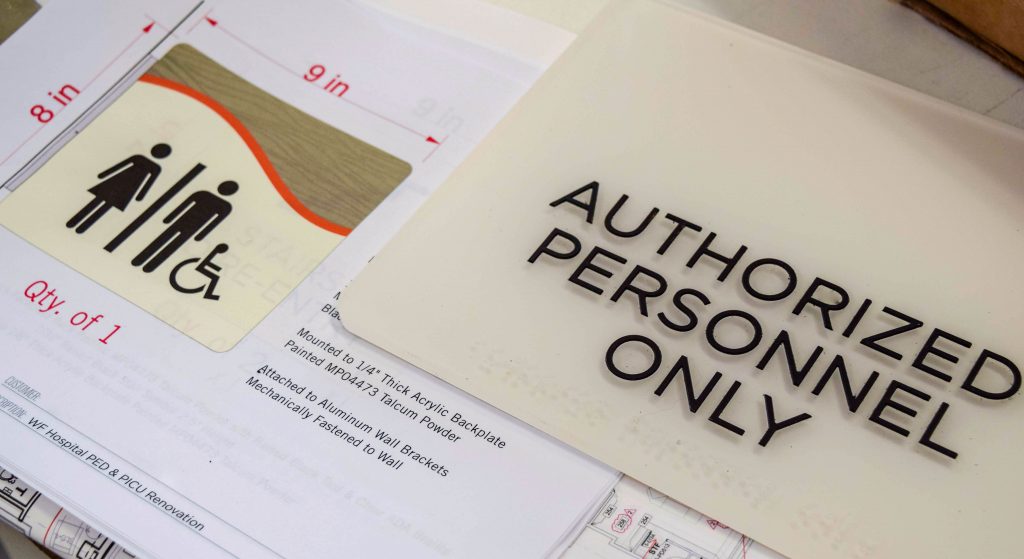Sometimes, the simplest things are the most fascinating. Take these ADA wayfinding signs signgeek created, for example. At first sight, they just seem like basic signs. To us, these signs represent the craft and art of the sign making business.

The whole process starts with the customer. We receive logos and all other information, then we help to design the signage layout.

We create computer files that, when connected with the routing machine system, will cut the letters and your shapes to exact specifications.

To produce the signs, we layered multiple pieces of acrylic together. signgeek received this wave textured header from 3form. Our shop technician laser cut acrylic for each orange accent. We were able to get such a vibrant and brand-consistent orange thanks to our Matthews Paint mixing station. Once the router has done its job, we mounted all three shapes of acrylic together – the backer and the two front pieces.
In this instance, we used Rowmark engraved letters for a three-dimensional look. We applied a small section of Rowmark material, and engraved the letters or numbers out. After the engraving, we pulled off the remaining material.
To add more design appeal, we can etch a logo or other design on the remaining acrylic.
In addition to our standard wayfinding signs, we specialize in ADA compliant braille wayfinding signs to benefit those with vision impairment.
For those that do not need them, ADA wayfinding signs are often passed by without second thought, but the process of incorporating the braille is quite interesting.

Those little dots take a two part process. First, a special drill bit bores holes that will house the braille beads. The holes are specially made so the beads pop into place without falling out. No glue or adhesive needed, just a special tool that pushes the beads in. Pretty cool, huh?
As you can see, there are a few key elements that factor in to building a great ADA wayfinding solution. First and foremost, you need braille dots on the signage. Second, the letters, shapes, and logos must be dimensional and up to ADA standards. Lastly, you can opt to add a textured header for added aesthetics and accessibility to all.